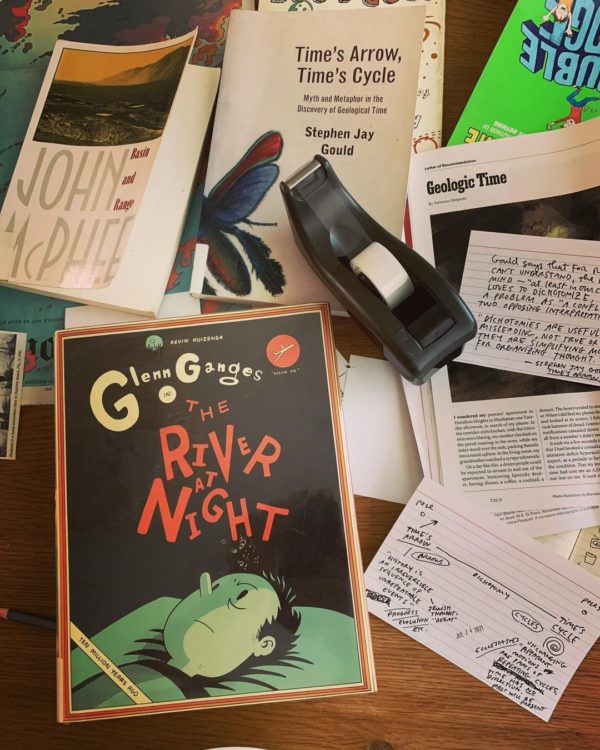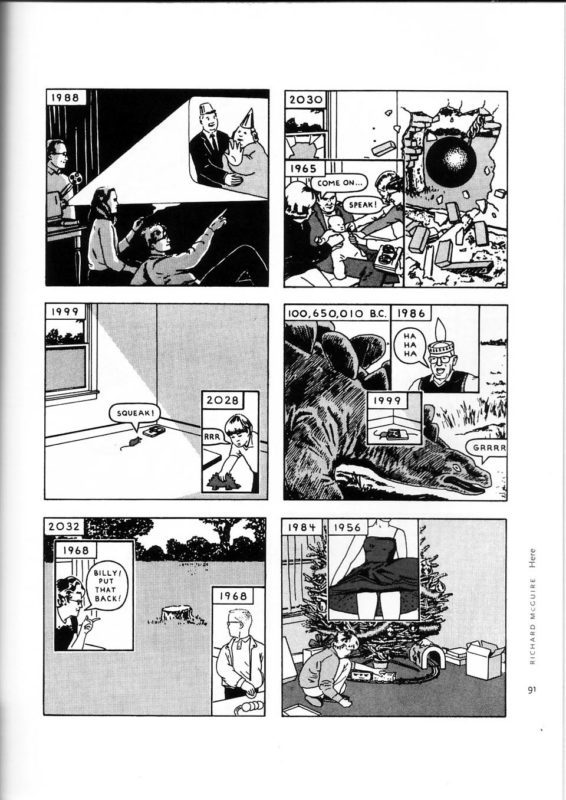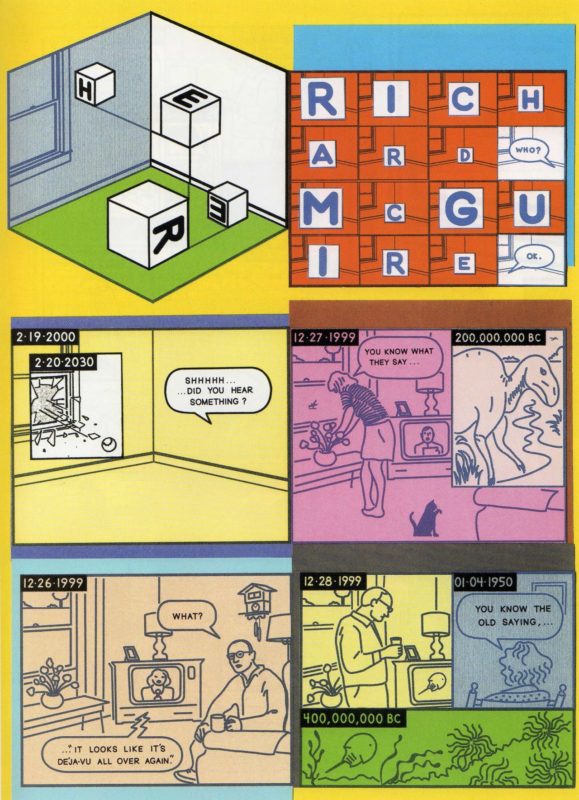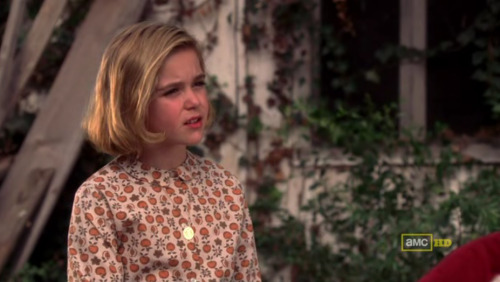
From the Dept. of No Coincidences: I was flipping through John McPhee’s Basin and Range and Stephen Jay Gould’s Time’s Arrow, Time’s Cycle: Myth and Metaphor in the Discovery of Geological Time, two books which inspired passages in Kevin Huizenga’s The River at Night, when I opened up the Sunday NYTimes magazine and found Yohanca Delgado’s letter of recommendation for thinking about geologic time.
Delgado has A.D.H.D. and a kind of “time blindness” that makes it hard for her to keep track of the passing of time. She praises Marcia Bjornerud’s Timefulness: How Thinking Like a Geologist Can Help Save the World:
[O]ur solar system has a 10-billion-year life span; it will end when the sun enters its red-giant phase and begins engulfing its orbiting planets, including Earth. In that context, Bjornerud writes, mountains are “ephemeral.” Much of what we once believed to be eternal and unchanging about our planet is vital and dynamic, constantly shifting around us. We are still deciphering parts of the planet’s geologic history, in hopes of anticipating future, potentially cataclysmic, events.
“For me,” Delgado writes, “holding time in a much larger perspective eases the day-to-day anxieties of living.”

In The River at Night, the main character, Glenn Ganges, has trouble sleeping and spends most of the book thinking about the nature of time. Comics is a medium well-suited to exploring time, as explained in this interview with Art Spiegelman:
in a comic you have various panels. Those panels are each units of time. You see them simultaneously. So you have various moments in time simultaneously made present in space. And that is what Maus is about. It is about the past and present intertwining irrevocably and permanently.
A great example is R. Crumb’s “A Short History of America.”

Maybe one of the most impressive examples is Richard McGuire’s Here.
In 1989, Mr. McGuire, then an aspiring New York artist better known for playing bass in the postpunk band Liquid Liquid, published a 36-panel comic that hopped backward and forward through millions of years without leaving the confines of a suburban living room, thanks to the use of pop-up frames-within-frames inspired by the relatively new Microsoft Windows… now he has popped up through a wormhole of his own, with a full-color, book-length version of “Here” that once again transforms a corner of his childhood living room in New Jersey into a staging ground for all of earthly history.
Each two-page spread features a fixed view of the room in a certain year, with pop-up windows giving glimpses of what might have been visible in exactly that spot at various moments in the past and future: from the tail of a passing dinosaur to a 1960s children’s birthday party to a quiet late-21st-century fireside chat.


The irony of comics being such a great medium for depicting and thinking about time is that comics take forever to make.
“The holy grail is to spend less time making the picture than it takes people to look at it,” Banksy supposedly once said. For cartoonists, the ratio of time spent drawing to time spent reading is enormously skewed towards the labor of drawing.
I’ve gotten away from myself, here, and lost track of time, as one often does when thinking about time.
Picturing “deep time” can keep things in perspective, just as picturing “deep space” can keep things in perspective.

But the opposite, of course, is always possible. Thinking of one’s insignificance can spend you spiraling, as it did Sally Draper, a character on Mad Men:
When I think about forever I get upset. Like the Land O’Lakes butter has that Indian girl, sitting holding a box, and it has a picture of her on it, holding a box, with a picture of her holding a box. Have you ever noticed that?
(She’s describing the Droste Effect.)